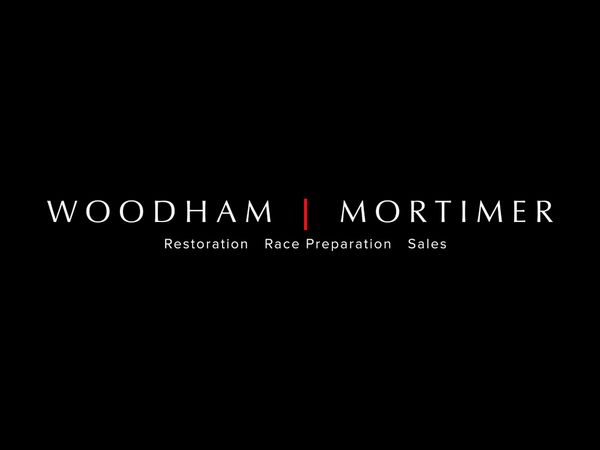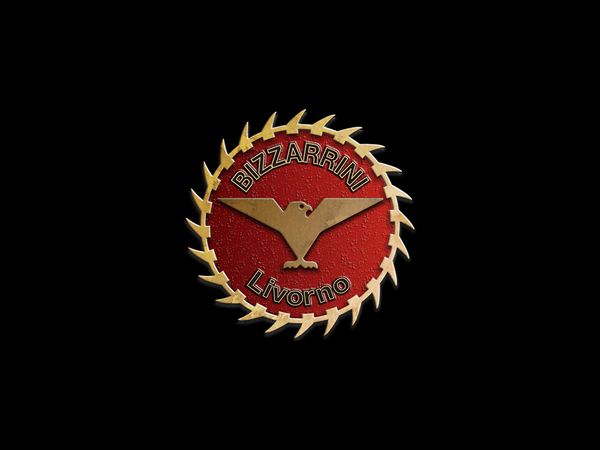Bond Street Sale - 1st December 2018
Chassis no. 285
£ 2,200,000 - 2,800,000
€ 2,500,000 - 3,100,000
The Ex-Martin Brundle/Jean-Louis Schlesser/Jan Lammers/Mike Thackwell V12-engined, 1985 Jaguar XJR6 World Endurance Championship Group C Racing Coupe
*One of just two Jaguar-entered, British Racing Green XJR V12s
*Podium finish upon this model's 1985 race debut
*Purest shape of all the V12-engined TWR Jaguars
*Driven by two future Jaguar Le Mans winners
*Pioneering Tony Southgate design presaged double wins at Le Mans and in World Endurance Championship
The V12-engined Group C TWR-Jaguar XJR-series racing Coupes such as '285' offered here were built essentially in batches of three each year from 1985, although only two of the initial trio were raced in that debut half-season.
By 1989, the long and iconic era of 1,000Km World Championship endurance race rounds was over. All WEC races had been diminished to 480kms while the longer events such as Le Mans, Daytona and Sebring lost Championship status. These short rounds usually lasted less than 3 hours and a new type of turbocharged sprint car became necessary to remain competitive. TWR accordingly created its V6 turbo-engined XJR-11, but the V12 XJRs were still preferred for Le Mans, Daytona and Sebring. In fact for the final Mexican round in 1989, TWR ran two V12 XJR-9s rather than their 3.5 litre V6 turbo alternative.
At its height, Group C saw Jaguar confronting more major factory teams than have contested Formula 1 for many years; Jaguar versus Sauber-Mercedes, Porsche, Nissan, Toyota, Aston Martin, Mazda and more... Only nine TWR Jaguar XJR cars in total were built completely new 1985-1988 of which only six were sold. Here we offer the debutant model of the series which brought Jaguar back not only to winning Le Mans but also to double-World Champion status, which the ancestral C-Types, D-Types and 'Lightweight' Es never achieved...
Jaguar XJR-6 chassis '285' offered here would be as welcome at any concours as in singing the most spine-tingling sound in current Historic Group C racing...
Here we are privileged to offer this exquisitely well-presented, running order example of the first Tony Southgate-designed Group C endurance racing Coupe to be constructed and campaigned as a quasi-works car by Tom Walkinshaw Racing during the latter part of the 1985 World Endurance Championship.
This originally 6.2 – and later 6.5-litre – V12-engined Jaguar-liveried British Racing Green beauty is chassis '285' which was entered by the quasi-works TWR team in five later-season 1985 Championship rounds for drivers including Martin Brundle, Hans Heyer, Jean-Louis Schlesser, Jan Lammers, Steve Soper and Mike Thackwell. Upon the new model's debut in the Budweiser GT 1,000Kms race at Mosport Park, Canada, on August 11, 1985, this very car was driven home into third place overall – headed only by the works Rothmans Porsche 962Cs – by Martin Brundle/Mike Thackwell/Jean-Louis Schlesser.
Jaguar Cars Ltd built its wonderful racing reputation through the 1950s when its tailor-made Jaguar C-Type and D-Type cars won the Le Mans 24-Hour race no fewer than five times.
From 1985 to the early months of 1993 the TWR Racing Organisation, based at Kidlington in Oxfordshire, England, developed and campaigned three distinctly different generations of Group C endurance racing and GTP prototype competition cars.
Initially the TWR Jaguar XJR designs were powered by the well-proven naturally-aspirated 24-valve Jaguar V12 production-block engine. As developed under the direction of engineer Alan Scott these Group C racing power units developed a quoted 745bhp 7,250rpm. Tom Walkinshaw and his team had amassed tremendous experience of the V12 power unit after three years in European Touring Car Championship competition with their Jaguar XJ-S cars.
Their first new tailor-made endurance racing Group C Coupe design was then the XJR-6 as now offered here. Designer Tony Southgate had worked previously with Lola Cars, with Dan Gurney's AAR Eagle Formula 1 and Indycar team, then with BRM, Arrows, Lotus and more. His XJR-6s were built around a carbon-composite and Kevlar moulded monocoque – manufactured for TWR by Advanced Composite Technology Ltd of Heanor, Derbyshire. The shapely and aerodynamically slippery bodywork was formed in a mix of composite, Kevlar and GRP materials, with tail wing and full underbody in carbon fibre, the underfloors including venturi ground-effect aerodynamic tunnels.
The first Jaguar XJR-6 prototype was shake-down tested by driver Martin Brundle at Snetterton on July 2, 1985. Its XJR nomenclature was based upon the pre-existing series of specialised racing Jaguar Coupes campaigned in the USA by American Bob Tullius's Group 44 company. In discussion with Mike Dale of Jaguar North America the retrospective designations XJR-1 to XJR-4 had been assigned to preceding Group 44 Jaguar-GT racing projects ranging from their Championship-winning Jaguar V12 E-Type to the 1981 Camel GT Championship-series XJ-S. These cars were followed by the purpose-designed XJR-5 Coupe for American IMSA GTP racing in 1982-83, a design which Tullius brought to Europe and ran at Le Mans in 1984-85. However, newly-privatised Jaguar Cars Ltd preferred an all-British project to promote their brand into the later-1980s, and Tom Walkinshaw won their support to initiate his company's quasi-works XJR-6 programme.
Upon the August 1985 racing debut of these new Jaguar V12 Coupes in the Budweiser 1,000Kms World Endurance Championship-qualifying race at Mosport Park, the two TWR-entered cars surprised everyone – not least the rival quasi-works Rothmans Porsche team – by being so evidently beautifully engineered, and quick.
The two new British cars – finished in full Jaguar British racing green livery - qualified third and fifth fastest, consistently improving their lap times while experimenting with ride heights and suspension settings. TWR's number one driver Martin Brundle actually led the race in the early laps until a front wheel bearing failed, overloaded as a result of the new design's prodigious front-end downforce at high speed, forcing the car's retirement after 12 laps. Brundle was then transferred to the sister Jean-Louis Schlesser/Mike Thackwell car – chassis '285' now offered here. French driver Schlesser was going very well before handing over this 'No 52' car to Mike Thackwell and Martin Brundle for the remainder of the race, his own originally nominated co-driver Hans Heyer standing down. Despite several time-consuming pit stops including one of twelve minutes to repair a leaking brake caliper, Brundle was able to work it back up into third place by the time the two dominant Rothmans Porsche 962Cs took the chequered flag to complete the full 1,000Kms distance. This was still a fine result for a debut appearance and it provided the British TWR-Jaguar team with essential experience of the kind which no amount of pre-race and private testing could offer.
In the following WEC round at Spa-Francorchamps, Belgium, on September 1, the Brundle/Thackwell XJR-6 finished fifth while '285' here was co-driven by Schlesser/Heyer but had to be withdrawn after 14 laps due to handling issues. At Brands Hatch on September 22nd both new TWR Jaguar Coupes were sidelined by engine failures, '285' having been entrusted that time to Jan Lammers/Hans Heyer, who had qualified sixth fastest after the fleet little Martini Lancias occupied the front row of the starting grid, and the two Rothmans Porsche 962Cs locked-out row 2.
The team then travelled to Japan for the Mount Fuji 1,000Kms on October 6 but there both cars suffered from identical valve-gear problems and their engines were still being reassembled as official practice began. Two earthquakes then shook Fuji overnight and race day dawned to heavy rain threatening to flood the circuit. Team owners and drivers met to discuss the conditions and the organisers were asked to postpone the start in expectation of a slight improvement in the weather. When this did not materialize, most of the visiting European teams finally decided not to race. The TWR XJR-6s – including '285' co-driven there by Hans Heyer/Steve Soper - ran for only four laps before conditions were deemed too dangerous to continue – leaving the local teams only to contest a much-diminished event which would be flagged to an end at just quarter-distance...
Following this unfortunate debacle, the 1985 WEC season ended on December 1 at Shah Alam, Malaysia with the Selangor 800kms race. There the TWR Jaguar XJR-6s took an early lead from the Rothmans Porsche 962Cs, before Mike Thackwell began to suffer from the extreme heat and Dutch driver Jan Lammers' sister car – chassis '285' offered here, originally assigned to Lammers and the Italian driver Gianfranco Brancatelli - had its left-rear tyre burst, resulting in its retirement. An exhausted Thackwell eventually handed over the surviving XJR-6 to Danish co-driver John Nielsen when holding fifth place. Jan Lammers was co-opted to take over from the Dane – and this trio of Thackwell/Nielsen/Lammers finally finished a worthy second overall behind the winning Jacky Ickx/Jochen Mass Porsche 962C.
So this TWR Jaguar XJR-6 Coupe was entered in the last five World Endurance Championship races of 1985, and during the winter into 1986 many of the lessons learned were built into developed team cars for their first full season as series WEC challengers.
Overall, six XJR-6 cars were constructed. The initial pair of chassis serials '185' and 285' had been produced with some urgency in the late spring and early summer of 1985. This first pair of 1985 XJR-6 Coupes were finished in dark Jaguar British Racing Green livery with white panelling on the engine cover and nose. From their third race, at Brands Hatch in September 1985, front brake cooling ducts were added on each side of the central radiator intake in the nose. Gull-wing doors were featured and cockpit cooling ducts would later be sunk into the horizontal door panels. Initially these XJR-6 cars suffered from insufficient rear-brake cooling, causing premature retirements as axles and bearings overheated. Periscope brake cooling ducts attached to the top of the hollow suspension uprights were then adopted as standard.
For short-distance sprint racing the V12 cars carried double element rear wings supported by a pair of alloy plates bolted vertically the gearbox tail casing. The XJR-6 wing endplates tapered towards the front and had a vertical trailing edge. Adjustment slots were provided within each plate to select the incidence angle of the upper wing.
All XJR-6 chassis ran on sand-cast one-piece five-spoke magnesium wheels by Speedline, 17-inches in diameter at the front and 19-inches at the rear, equipped with Dunlop Denloc racing tyres. The XJR-6 front headlamp recesses accommodated a single headlamp and indicator light only.
Sponsors through that latter part of 1985 were Jaguar Cars and Castrol Oil. Chassis '185' and '285' were not raced again after the end of the 1985 season but both were tested extensively at Estoril in Portugal during February 1986. Chassis '285' was the first to be re-liveried in 1986 Silk Cut Jaguar colours of mauve, gold and white, reflecting a new sponsorship deal with Gallaher International. The chassis was considerably re-engineered for the new season, together with adoption of a 6.5-litre version of the V12 engine and other mechanical and bodywork improvements. Cooling louvres were cut into the side panels for the engine-oil heat exchanger and battery and engine bays. Roof-mounted engine air intake scoops appeared on the 1986 XJR-6 cars.
And on May 5, 1986, the Derek Warwick/Eddie Cheever-driven Silk Cut Jaguar XJR-6 won the Silverstone 1,000Kms for the first of the future World Championship-winning TWR-Jaguar team's qualifying victories at that premier level.
This car – chassis '285' – the only Jaguar-liveried example to have taken a podium place upon the race debut of TWR's quasi-works XJR Coupes which would later add not only two further Le Mans wins to 'The Cat's impressive tally, but also two World Championship titles - passed ex-works to leading marque collector Campbell McLaren. The car was then sold by Bonhams at the 1999 Goodwood Festival of Speed, Martin Brundle driving it there again in 2000. New owner David Coplowe co-drove it with Martin Stretton, who qualified on pole for the first Historic Group C 2-hour endurance race at that same year's Silverstone Historic Meeting, and Mr Coplowe campaigned the car widely across Europe for the following three seasons. It passed subsequently to John Pearson Jnr who demonstrated it at the 2007 Silverstone Classic celebrating Group C racing's 25th anniversary, before it passed to the present vendor – a great Group C enthusiast who, incidentally, had tried repeatedly over eleven years to acquire one of the cars since an initial negotiation with Tom Walkinshaw at Le Mans in 1989!
This mouth-wateringly-attractive TWR Jaguar XJR-6 Coupe is offered complete with a most comprehensive documentation file which includes many fascinating TWR team documents including original set-up, race and test paperwork, a considerable proportion of it hand-written by the TWR team engineers in the field. The documents present include a copy of the team's December 9, 1985 'TWR Jaguar Group C Proposal 1986' detailing intended development and disposition of existing chassis '185', '285' and '385', while new cars '186', '286' and '386' were described at the time as "commence build mid-January', '...end of Feb' " and "...assemble into complete monocoque only". Indeed, for any enthusiastic new owner close inspection of the documentation file can be as interesting – and certainly as illuminating – as inspection of this magnificent endurance racing Coupe itself.
Surely no serious Jaguar collection can be truly complete without such a car as XJR-6 chassis '285' now offered here – the Tony Southgate/Alan Scott-engineered tap-root from which all future Le Mans-winning and World Endurance Champion TWR Jaguar Coupes were developed.






















.jpg?width=1200&height=800&mode=crop)





